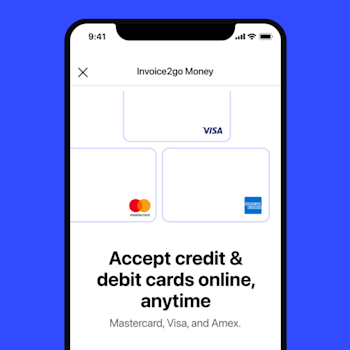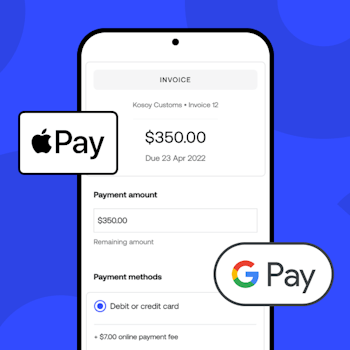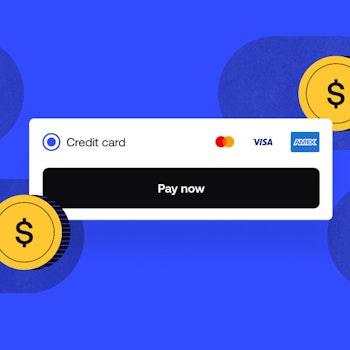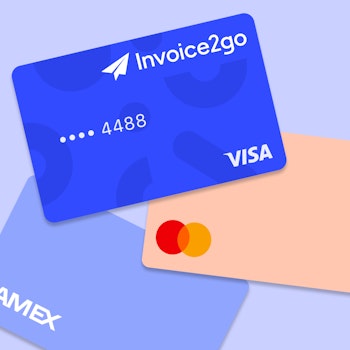How to find your niche in 7 simple steps
Whether you’re launching an online store or embarking on a freelance, consulting, or coaching career, finding a niche is essential to your success.
But what if you don’t know what your niche is? Or maybe you have some ideas, but how do you know if they’re viable? Skills and talent are must-haves when starting a business, but if nobody’s buying, neither will matter.
Finding your niche is a critical step before launching any new business venture. A niche is a specialty that will help you stand out from others with similar skills. Your niche will also enable you to market your services more precisely — and often charge more for them.
Choose well, and your venture could be both lucrative and personally satisfying, and that’s a sweet spot to which we all aspire.
Our 7-step formula to help you find your niche
Finding your niche business shouldn’t be too challenging. You’ve already got the goods; you just need to drill down a little to find your je ne sais quois — that “certain something” — that sets you apart from your peers and the broader market.
If you’re like most budding entrepreneurs, you’re an idea person, and it’s almost too easy to get overwhelmed by the possibilities. To help you stay on track, it’s best to take an analytical, objective approach. The numbers, after all, need to make sense, or your decision won’t serve you well.
So, in the spirit of combining quantitative analysis and quantum leaps of faith (without too much math), we’ve got a seven-step formula to help you find your niche market. By the time you get to the end, you’ll know exactly where you’re headed.
Without further ado, here’s how to find your niche:
1. Get clear about your passions and skills
Always start with yourself. One of the most vital aspects of a successful business venture is ensuring it’s something you really want to do. Sure, there are plenty of money-making ideas, but not all are right for you. Think about what it’ll be like down the road. Will you still love your idea tomorrow? And all the tomorrows after that? In the interest of sustainability, you need to choose a niche that serves you as much as it does the public.
You’ve probably heard some people say that their jobs don’t feel like work at all. That’s the ideal. Make a list of all the things you do. Don’t limit yourself to job-related activities. Include the stuff you do in your spare time, even if you think you couldn’t possibly make money from them. Don’t hold back.
Plumb the depths of your meanderings (including your browser history) for inspiration. Think about what you’re trained for, any degrees you have, and see if you can match those skills with an equal measure of passion.
And if there isn’t anything in your educational background that motivates you, how about your hobbies? Are you considered the go-to expert for any specific topic? Are you a card-carrying member of any clubs? Or is there something you’re weirdly good at but always thought was too easy or too ridiculous to turn into a career?
When it comes right down to it, that’s what niche ideas are all about: things you can do better than anyone, things you’re always interested in learning more about, and therefore, more likely to put time and effort into perfecting. The passion niche businesses inspire in founders is just one of the many qualities that distinguish them from those with mass market appeal.
It’s a fun exercise at the very least, and in no time at all, you’ll have yourself a niche!
2. Figure out what problems you can solve
Once you’ve narrowed down a niche (or two), it’s time to identify problems within that niche. Problem-solving is a big part of your value proposition. It’s also how you’ll market your services.
First, figure out if there’s a problem to be solved. Then find out if it’s something you can do. If you’re unsure how to go about this, consider where your potential customers go for advice on your topic. Are there websites, or LinkedIn or Facebook groups dedicated to your niche? Who are the key players and influencers? What are some of the issues that come up most frequently?
You might also look at topics or threads with a lot of active engagement, indicating strong motivation.
In the real world, you can also seek out people from your target market and see what they have to say. Pick their brains about what they’d like to see within the niche or what they don’t see enough of.
The more people you talk to, the clearer the picture will become. Take notes, since even the smallest detail might spark some inspiration. For instance, maybe you constantly hear about that fantastic store that has everything a pet lover could ever want – but is just way too expensive. Could you offer similar products for less? Or could you add services like grooming, doggie daycare, or pet boarding to add extra value and build loyalty with local pet owners?
Identifying niche markets ultimately boils down to looking at the big picture, then thinking outside the box. It’s not about one-upping the competition as much as it is about filling an unmet need.
3. Do keyword research to find if there’s a demand for your niche
Not all killer ideas are viable business endeavors. Finding out what your potential niche is before you dive in is wise. If there aren’t other businesses specializing in your niche, it’s worth finding out why.
Ultimately, you don’t need to land in a crowded niche to succeed. You could be the only one doing what you do — as long as there are enough customers to make it worthwhile, you’ll do just fine. But you’ll need to know the playing field beforehand, or it’ll be an uphill battle.
There are many ways to conduct market research, but one of the easiest ways to get started is by doing keyword research online. Use Google Keyword Planner to research keywords associated with your niche. It’s a free tool that businesses use to plan their online marketing and make the most out of their advertising dollar.
What you’ll learn is twofold. First, you’ll determine the search volume for products and services like yours. Second, you’ll see how competitive the niche is. You’ll also get suggestions on how much you should bid to get your ad in front of target customers. The higher the suggested bid, the more confident you can be that there’s money in those keywords. People pay more to rank for specific keywords because they know they’ll make more. Of course, a popular niche means you’ll have to work a little harder to grab the attention of your target audience, but you’ll at least know you’re on the right track.
4. Dive deep into the competition
In your research, you’ll likely come across some of the top players in your niche. Check them out! Find out what people are saying about them and what they’re doing right, wrong, or otherwise. Can you identify gaps in their services? Can you do better?
If you’ve chosen a crowded space, like web design, it might seem like your business will be totally lost in a sea of similar services. Maybe it’s better to find a niche market that’s not so crowded — or you could drill down a bit and develop a more focused business. Going back to your hobbies, is there a specific type of business you know so much about that you could create websites for them better than any web designer out there? When you understand a business’s needs, you’ll be in a better position to meet them.
You might also find that no other businesses are ranking for your keywords. That would indicate that there’s not much of a market for your idea, so beware. You’ll need customers (and a steady stream of them) if you want to grow. Think long-term, and consider the growth potential. On the other hand, you might find that although there are only a handful of sites ranking for your keywords, they’re of poor quality or lacking in some way. In that case, it might indicate you’ve got a chance to dominate that niche.
Whichever way the pendulum swings, use the information to inspire and inform your next steps.
5. Identify what sets you apart
Once you know the players, it’s easier to stand out from the crowd. Ask yourself why people should buy from you versus your competitors? If you can articulate this, you’ll have identified your value proposition or unique selling point (USP).
If you can’t come up with anything clever right away, don’t worry. You’ve come this far, so there are obviously some redeeming qualities to your idea. Think about your passion, insight, talent, and special skills. Then, look at what your competitors are doing. How would you do it better?
Perhaps your niche is too conservative. Maybe your competitors are missing out on an entire demographic because they’re stuck in the past or not using technology to their advantage.
An excellent example of this is the legal profession. Traditionally, this industry has relied on high-end offices, face-to-face interactions, and voluminous amounts of paper. It took years for the industry to get on board with modern technology and online services simply because they refused to change. Virtual law offices and online paralegal services transformed and disrupted the landscape, creating value for clients and boundless opportunities for new lawyers who couldn’t afford fancy offices to build their practices.
That’s just one example, but don’t be afraid to think about what it would be like “in a perfect world,” because you might just be able to accomplish it.
6. Drill down deeper into your niche market
Once you’ve decided on a niche to pursue, it’s time to take it for a spin. One of the best ways to do this is by setting up a simple webpage, also known as a landing page. Ideally, the page will leverage your keywords to drive traffic to it, where you’ll offer something like content in exchange for an email, pre-sales of your product, signups for more information, or whatever makes sense that you can accomplish easily enough.
Use your well-researched keywords in paid ads to drive traffic to your page. Be sure to place Google Analytics code into the page header, so you’ll know where your traffic is coming from. If all goes well, this is good intel you can use when launching your business for real.
A number of things can result from this exercise:
- People will download your content or provide their email
- You’ll get loads of traffic but no conversions
- Nothing will happen
Of course, if it’s a case of “no conversions” or “nothing happened,” it’s not necessarily your business idea that’s the problem. It could be your landing page. The anatomy of a landing page is very specific, as it’s designed for a singular purpose: to convert site visitors to customers. It needs to be simple, direct, and concisely explain your offer and its value. Use headlines and sub-headlines to break up the copy and direct the reader’s eye down the page. And don’t forget the all-important CTA. A strong call to action is essential to encourage the visitor to convert. Niche marketing is far from easy, but the effort is worth the customer loyalty it can inspire.
There are lots of great landing page generators with built-in tools to get you started, but most aren’t cheap, and there’s no need to invest big bucks at this stage.
7. Launch your idea
At this point, you should have a clear idea of your niche and be ready to test it out in the real world. Your landing page exercise should’ve given you some data to indicate what your target audience thinks. Now, it’s time to see how your niche idea performs.
Whether you’re selling a product or service, you’ll need a website — headquarters for your fabulous new company, the destination for all those things only you can deliver. Choose a simple design, hire a freelancer to help you with your design assets, and plan your launch thoughtfully to maximize impact.
Whether you’re opening a store in the neighborhood or introducing your unique talents to the world via a website, make sure you have a way to measure the results. Marketing and business growth rely on constant improvement, adjustment, and interaction with the people who matter most — your customers.
Related Articles

How to accept credit card payments on Invoice2go in 3 simple steps

Accept payments online via Apple Pay and Google Pay

Must-not-miss write-offs as you wrap up 2022 year-end finances

5 ways accepting credit and debit card payments helps your business stay resilient

4 easy ways to increase cash flow today

What is Small Business Saturday and why is it important?
The features and surprising benefits of a well-designed packing slip
